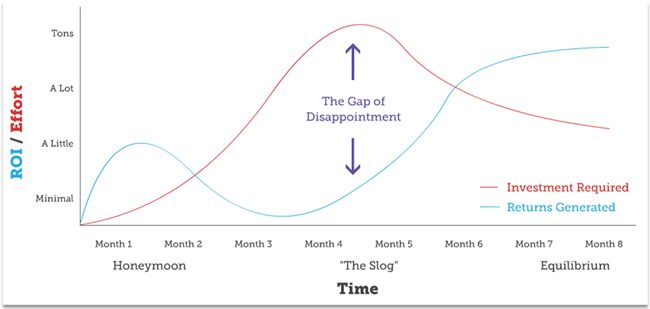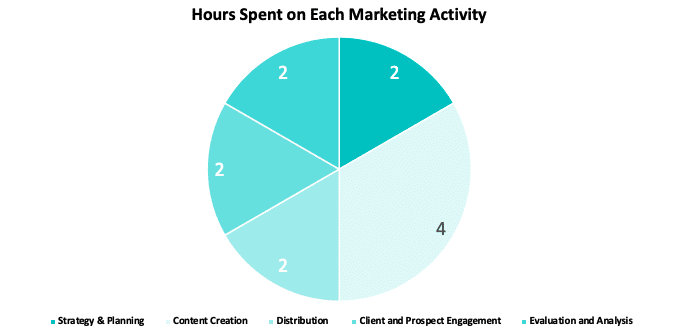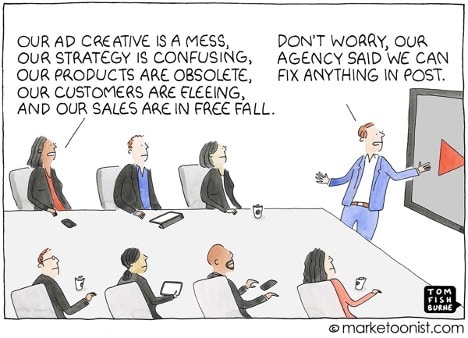Interested in learning more about the Advisor I/O platform?
Leave us your info and we'll send you more details
Blog Detail
The Ugly Truths About Marketing Financial Advisors Need to Know
by Advisor I/O
As consumer demands have continued to evolve and increase, marketing has come a long way in the financial advisor world, especially in the last 24-months. Where in-person events and referral programs once drove, business is now shifted to a digital focus, with content at the core.
And the advisors making waves are increasingly leading with digital content.
Whether it’s Ritholtz Wealth and their slew of podcasts and blogs, The Colony Group deploying their white-glove digital platform to clients, or individual brands like Doug Boneparth generating large followings on platforms like Twitter – being digital-first and marketing-led is at the core of how advisors should be building brand now and in the future.
But no progress comes without some bad actors and turbulence. And we’ve first-hand seen advisors been tricked into thinking that marketing is a magic potion that can 10X your business in 90-days. The reality is much different. The reality can sometimes be a hard pill to swallow.
We dive into the ugly truths about marketing every financial advisor should know.
Marketing Takes Way Longer Than You Think
You can put the best plan together, be crystal about your audience, and have your marketing systems set up perfectly but see minimal traction in the first 90 days. This is extremely common for any brand.
Why? Because marketing impact takes a long, long, long time.
To understand this, look no further biggest brands in the world and our industry, and how long they’ve been in the marketing game for:
- CocaCola – since 1886
- Vanguard – since 1975
- Apple – since 1976
- Carson Wealth – since 1983
- Amazon – since 1994
- Salesforce – since 1999
While the examples are drastic due to their size, the message remains: They’ve been doing this for decades.

Source: Moz
And while digital can and specifically paid efforts can expedite marketing traction, it’s essential to understand that marketing momentum will take 9, 12, 18 months to generate. And that’s if you do it well.
People need to be conditioned to recognize a brand over time. They need to see your message repeatedly. If you’re planning to market, be in it for the long haul.
It Takes More Time and Effort Than You Plan On Giving
As an advisor, you’re no stranger to hard work. You’re likely running multiple parts of your business that take a lot of your time. Marketing is no different, and unless you’re outsourcing it all, marketing takes a ton of time and effort each week to do it right.
Generally, we see advisors spending anywhere from 6-15 hours per week on marketing across content creation, distribution, and everything else. That’s very dependent on how much you’re outsourcing.
But what should that 6-15 hours look like? Here’s a good breakdown if you spend 12 hours per week on marketing.

This may seem like a lot, but it’s essential to view it as a core part of business development, so it doesn’t feel separate from your sales efforts. Marketing is business development, and the sooner you get comfortable with that, the better.
It’s a Constant Battle Between What You Want and What Your Customer Wants
The most significant tension in any business is between what the company wants and what the customer wants. Whether it’s client demands, your pricing, the service you provide – this tension will always exist, no matter if you’re launching your practice or have had your business for 20-years.
But at the end of the day, you report to your customers, especially when it comes to marketing. It’s not about your internal stakeholders, your boss; it’s about creating things your customers care about, even if it’s not core to you.
We like to think about this through the mantra of leading with the customer at the core.
This is where unpacking your customer needs is so critical. We cover more on how you can unpack these needs here.
Creating Great Content Is Only a Fraction of the Battle
Imagine this scenario: You spend two weeks writing a piece and end up with a 2,000-word value-add monster that you can’t wait to get out to the world. You share it on social media once, and two weeks later, you check the analytics… crickets
We’ve seen this scenario too many times to count.
Why? Too many people focus on content creation and not promotion. The reality is that content creation is 40% of the battle—the other 60% how you repeatedly promote that content. The average life of a tweet is 18-minutes. The average life of a LinkedIn post is 24-hours. The average reach of an organic post on a Facebook Page is around 5.20% of your entire audience.
You should never be afraid to find new ways into that same blog post you wrote over weeks and months. A single blog post can turn into a graphic, video, podcast episode, short presentation, how-to-guides, and more.
Some tools and ways you can do this tactically can be found here.
Paid Efforts, If Not Done Right, Are a Massive Waste of Money
Paid media gets talked about in our industry a reasonable amount. Many times, we’ll hear an advisor say, “I’ve been boosting posts on Facebook” or “I tested paid media but didn’t see any ROI in the first few times I did it, so I stopped.”
Two points here that need to be addressed:
- If you’re in the game of just “boosting” posts, you’re likely burning dollars. While “boosting” can get your content in front of an audience, leveraging the native ad platforms (i.e., Facebook Ads Manager) is the only way to build a cohesive ad strategy truly. Why? Because using these tools enables you to 1. Leverage the platform’s full targeting capabilities 2. Set up different types of ads, including lead generation ads and 3. Build off your past ads, including creating audiences who have interacted with your content or website.
- Running ads at a low budget or short period rarely equates to results. The algorithms learn over time to show your ads to the relevant people, and they need time and room (budget) to do so.
Some budget recommendations if you’re just getting started with Ads:
- Facebook/Instagram: $1,000/m+
- LinkedIn: $1,500/m+
- Google Ads / YT: $500/m for long-tail topical keywords, $2500/m for local keywords
- Twitter: We don’t usually advise here as their ad data is fairly unreliable
If you’re going to do ads, do them the right way.
Great Marketing Can’t Fix a Crappy Product / Service

This brings us to the last ugly truth: Great marketing can get people there, but it can’t make them stay. Marketing is half the battle when creating a successful service/product, but if you don’t have your service model tight, then you’ll see more turnover than you’d like to see.
A few general areas to clean-up before pushing marketing:
- The services you’re offering if they’re one service-fits-all model or tiered
- Your pricing model and determining if it’s flat-fee, AUM, or tiered
- How you’ll onboard new clients, the technology needed to make it seamless
- How often you’re communicating, meeting, and talking with clients
- What type of information you’re providing regularly
The Bottom Line
Marketing should and will be a part of your practice growth. But it’s essential to root any marketing program when getting things going. Time, effort, investment, and results must be balanced as you’re building.




